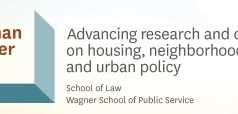Rise in Retail Bankruptcies Puts Spotlight on Restructuring Commercial Mortgage Loans, According to March ABI Journal Article
Alexandria, Va. – (RealEstateRama) — As brick-and-mortar retailers continue filing for bankruptcy, commercial real estate lenders and borrowers should focus on case law and recent legal developments for restructuring a commercial mortgage, according to an article in the March ABI Journal. “A change in only a percentage or two on a multi-million-dollar commercial loan can mean the difference between a plan being ‘feasible’ or not,” David R. Kuney of Whiteford Taylor Preston LLP (Washington, D.C.) writes in his article, “The Myth of the ‘Efficient Market’: Restructuring Real Estate Mortgages.” “A higher interest rate will doom the prospects for confirmation if the cash flow from the commercial project is not sufficient enough to service the debt requirement.” Kuney is also the author of the forthcoming ABI title Retail and Office Bankruptcy: Landlord/Tenant Rights, available for presale at store.abi.org.

Kuney writes that real estate restructurings may rise or fall on a court’s determination of whether a restructured real estate loan will insure an interest obligation under the Supreme Court’s notion of a “formula” rate as set forth in the 2004 decision of Till v. SCS Credit Corp. The Till case, which arose in the context of a consumer chapter 13, found that courts should generally use a “formula” approach and not necessarily apply a rate determined by comparable loans in the marketplace. “Yet Tillcontained infamous footnote 14, which stated that in chapter 11, there might be an efficient market, and if so, a court could consider using the efficient market rate,” Kuney writes.
A recent decision from the Second Circuit, Momentive Performance Materials v. BOKF NA (In the Matter of MPM Silicones LLC), might significantly alter how courts set interest rates on mortgage loans, according to Kuney. Hon Robert D. Drain, writing for the bankruptcy court, confirmed the proposed reorganization plan and held that the bankruptcy courts should not use a “market rate” but rather the formula approach. “Judge Drain doubted that there was ever likely going to be an efficient market for any commercial loan, since commercial lenders must build in fees, profits and costs,” Kuney writes. “MPM is almost certain to renew this debate over loan pricing, both in real estate cases and elsewhere.”
Going forward, Kuney writes that policy reasons favor the use of the formula approach because it provides greater access to the bankruptcy process and more meaningful debt relief to struggling debtors, both inside and outside of real estate. “Adoption of the formula approach also reduces bankruptcy litigation and the army of experts lining up to dispute the applicable market rate of interest — each insisting on different comparable and relevant factors.”
To obtain a copy of “The Myth of the ‘Efficient Market’: Restructuring Real Estate Mortgages” from the March edition of the ABI Journal, please click here.
###
ABI is the largest multi-disciplinary, nonpartisan organization dedicated to research and education on matters related to insolvency. ABI was founded in 1982 to provide Congress and the public with unbiased analysis of bankruptcy issues. The ABI membership includes nearly 12,000 attorneys, accountants, bankers, judges, professors, lenders, turnaround specialists and other bankruptcy professionals, providing a forum for the exchange of ideas and information. For additional information on ABI, visit www.abiworld.org. For additional conference information, visit http://www.abi.org/education-events.
















